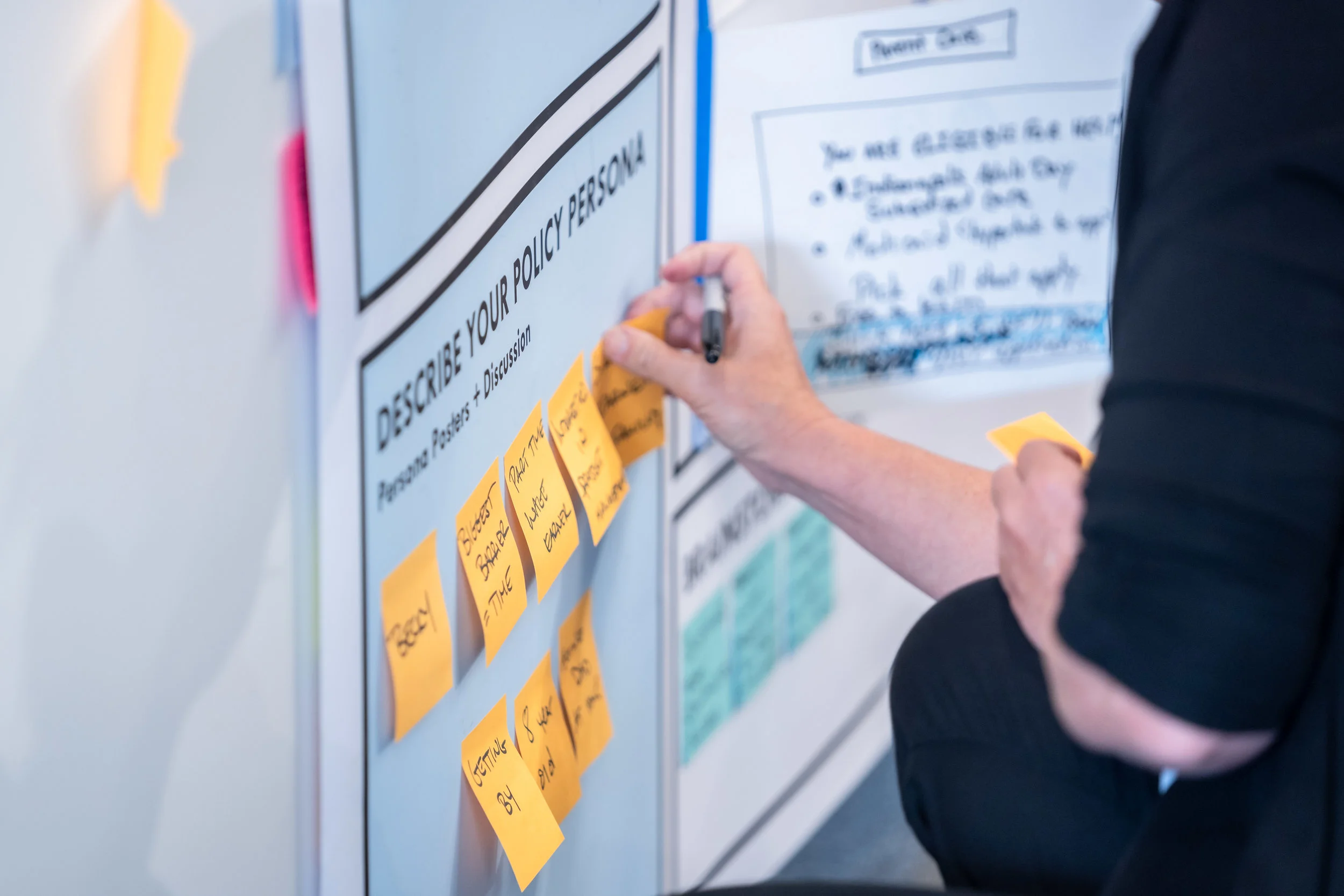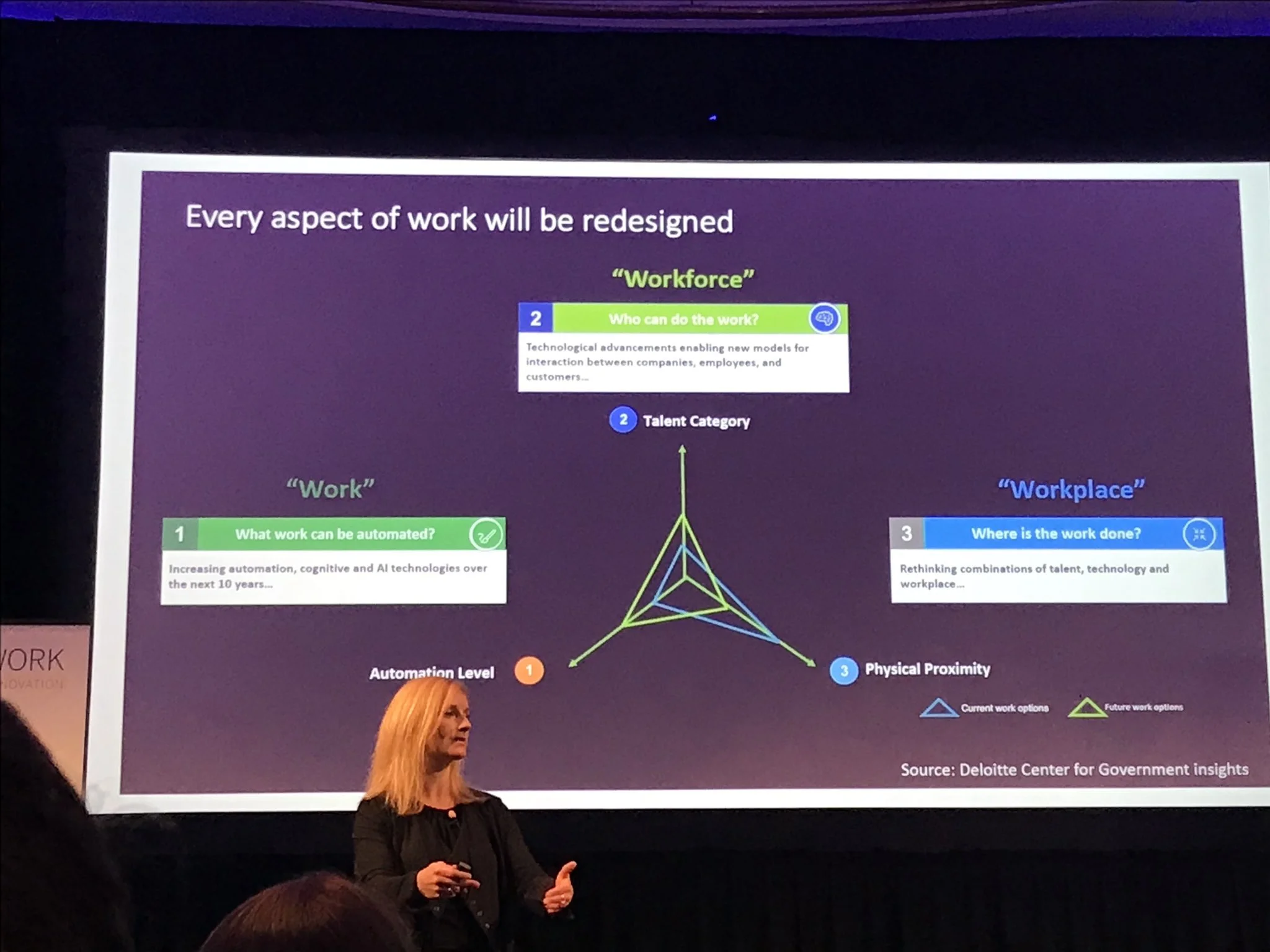It’s not impossible. Government CAN BE both functional and beautiful. Today the White House hosted a Champions of Change event in Washington DC highlighting thirteen local government innovators that are doing just that. According to Gov Tech, these champions have “worked to build a better future for their citizens, create jobs in their community, and ensure more efficient and effective government by making information and public data more accessible”. The folks highlighted today understand that true local innovation—changing the paradigm of the citizen’s relationship with its government—is not just as simple as creating “an app for that”.
Figure 1: Some Features of Transformative Local Innovations
When citizen engagement, crowdsourcing, and design thinking are also considered in the innovation process, truly transformative approaches to local government emerge that are changing the way we can think about what’s possible in governing. An app might be the mechanism, but how to build in engagement and design are lessons that many government agencies are still learning. When governments do this however, innovation efforts result in citizens who find more value from, participate in, and contribute to their community’s well being. According to Doug Matthews from Austin, Texas, almost as important as the function of a tool/product is the beauty of that function. The innovators highlighted today understand that well-designed government innovations should be many things, not just functional:
- Innovative
- A useful product
- Aesthetic
- An understandable product
- Unobtrusive
- Honest (don’t make promises you can’t keep)
- Long lasting
- Thorough
- Environmentally friendly
- As little design as possible (focus on only the essential elements)
Seeing Design Thinking in action in local communities around the US is incredibly gratifying. Design Thinking in and of itself has become a movement over the last several years spearheaded by the likes of the Stanford Design School and design firm IDEO (Disclaimer: Last year I kicked off a Design Thinking DC Meetup Group with a friend and colleague, Stephanie Rowe, to get this conversation going in DC). But when COMBINED with the other tactics we’re seeing these local governments use—Design Thinking becomes a force multiplier for real, honest to goodness impact in people’s lives.
As an example of the types of local innovations described by the champions, we turn to Boston, Massachusetts. Many cities have been collecting complaints and service requests through 311 programs for years. In recent years, inspired by the DC government’s pioneering efforts in open data (shout out to @kachok), many cities started opening up that data through open311 platforms. However, 311 data is only ONE source of data for what is truly happening in a city. Nigel Jacob and Chris Osgood from Boston, Massachusetts are pursuing ways to augment 311 data with other sources of data about the city—that comes from the palm of your hand.
Street Bump is a new app that turns mobile phone accelerometer data into a pothole service request to the local government. An accelerometer collects A LOT of data. So to identify when the vast amounts of data collected by the device indicated there was a “pothole”, Boston partnered with Innocentive to run a prize competition for an algorithm. Equipped with lots of potential data and an algorithm to analyze that data, Boston leveraged Design Thinking principles, working with IDEO, to design an app that would create an experience to enable data sharing with the government. Boston, using mobile phone technology that residents have already invested in, is experimenting with crowdsourcing additional data to compliment the 311 data set to better address service needs in the city.
It’s important to understand their process here: they did NOT go straight to an app. They made sure they had the data sources, the algorithm, the design and the public experience pieces figured out before they developed the tech.
Many other examples of this approach in action were highlighted today at the White House event as well. As Todd Park, the US CTO, said, “We’re not seeing one bright light; today demonstrates there is a constellation of bright lights. This is a movement. It’s extremely exciting.”
What other examples do you know of where government is being transformed—at any level—to be more functional AND beautiful through better design, use of IT, and citizen engagement?
As always please feel free to reach out in the comments section or to @jenngustetic to discuss further. Thanks for reading!
Jenn




